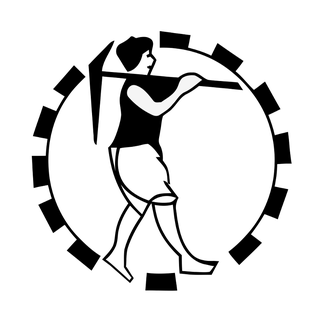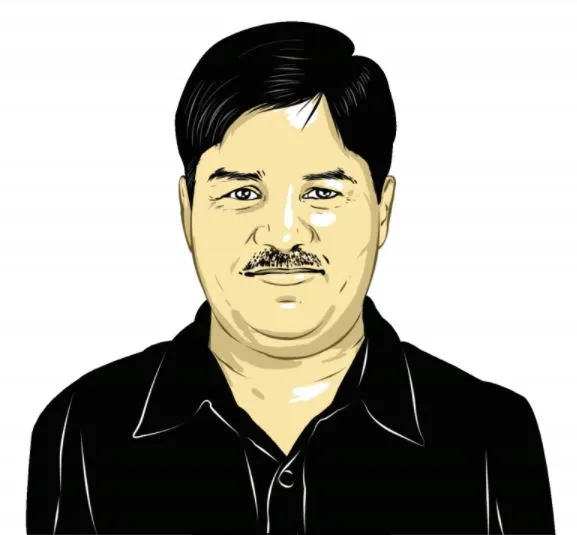Opinion 45 years ago, a Janata Party faction formed the Bharatiya Janata Party
BJP stalwart L K Advani writes in his autobiography, My Country My Life, “If the birth of the Janata government was a lesson in defending democracy, its demise was a harsh reminder about the propensity of power-hungry leaders to undo the gains of a popular democratic movement.”
 Newly elected BJP president Atal Bihari Vajpayee with general secretary L K Advani at the party’s first rally in Delhi’s Ramlila Maidan in April 1980. (Express Archive/R L Chopra)
Newly elected BJP president Atal Bihari Vajpayee with general secretary L K Advani at the party’s first rally in Delhi’s Ramlila Maidan in April 1980. (Express Archive/R L Chopra) As it prepares for its foundation day, the story of the Bharatiya Janata Party’s birth on April 6, 1980, deserves a retelling.
Before the end of the Emergency, imposed from June 25, 1975, to March 21, 1977, many historic events would take place in the country. Just before the sixth Lok Sabha polls in March 1977, in a successful move in Indian politics, the Opposition presented a united front against the Congress. Of the seven national parties then, four — Congress (O), Bhartiya Jana Sangh (BJS), Socialist Party and Bharatiya Lok Dal (BLD) — informally merged into one party, along with a few groups like Congress For Democracy (CFD), which was named the Janata Party.
Since the Election Commission (EC) did not give the Janata Party formal recognition before the 1977 Lok Sabha polls, it contested those polls on Chaudhary Charan Singh’s BLD ticket and won 298 Lok Sabha seats. The Janata Party, chaired by former Congressman Chandra Shekhar, would contest the Assembly elections after the Lok Sabha polls on its own symbol, a haldhar (a man with the plough on his right shoulder) inside a wheel — it split after the fall of its two successive governments, one headed by Morarji Desai, a former Congressman, and the other after first split in the Janata Party by Charan Singh, another former Congressman.
 After the 1977 Lok Sabha polls, the Janata Party was allotted its own symbol, a haldhar (a man with the plough on his right shoulder) inside a wheel. (Wikipedia)
After the 1977 Lok Sabha polls, the Janata Party was allotted its own symbol, a haldhar (a man with the plough on his right shoulder) inside a wheel. (Wikipedia)
BJP stalwart L K Advani writes in his autobiography, My Country My Life, “If the birth of the Janata government was a lesson in defending democracy, its demise was a harsh reminder about the propensity of power-hungry leaders to undo the gains of a popular democratic movement.”
Within a year of its formation, problems started plaguing the Janata Party and its government. One of these problems was the erstwhile BJS leaders in the Janata Party taking part in RSS activities. In a seeming reference to Atal Bihari Vajpayee and Advani, among others, socialist stalwart Madhu Limaye objected to this soon after the party’s formation. This complicated the situation for the Janata Party’s BJS camp since its history made it virtually impossible to dissociate from the RSS.
Whether to go into politics or to form a political party — such discussions had been going on since Mahatma Gandhi’s assassination on January 30, 1948. Finally, the BJS was formed by Syama Prasad Mukherjee and the RSS pracharaks owing to its reluctance to take part in politics on its own. This, despite a section of the pracharaks, including Prof Rajendra Singh, Balasaheb Deoras, Nanaji Deshmukh and Deendayal Upadhyay, Atal Bihari Vajpayee being in favour of the RSS taking direct part in politics — an idea shot down by then RSS sarsanghchalak M S Golwalkar. When the BJS was formed at the national level in October 1951, many RSS pracharaks joined its ranks.

Other problems in the Desai government led to the Janata Party’s first split — with the Charan Singh faction forming a group called the Janata Party (Secular). Though Charan Singh would form a short-lived government with Congress support, he would be abandoned by his new ally before he was to prove his majority in Parliament during the sixth Lok Sabha, which was constituted on March 23, 1977, and whose term was to end in March 1982. Congress’s desertion brought its end forward to August 22, 1979, and in January 1980, the country went to polls.
Before the January 1980 polls, a heated debate gripped the Janata Party national executive on September 2, 1979, on the issue of its members participating in RSS activities. At one point, the Janata Party president met then RSS chief Deoras to suggest an embargo on its MPs and MLAs joining Sangh activities. Deoras, however, informed him that such an embargo could only be decided in the next Akhil Bharatiya Pratinidhi Sabha.
Meanwhile, efforts were on to prevent further splits in the Janata Party, but nothing helped. Even as the Janata Party splintered, the Congress, then in Opposition, was undergoing a split of its own — Congress (I) and Congress (U). Unfortunately for the Janata Party, it continued to split well after the January 1980 mid-term polls, which resulted in the Congress catapulting to power under the very Indira Gandhi who was ousted in March 1977.
The mid-term poll results were a blow for the Janata Party. Charan Singh’s Janata Party (S) won 41, while the Janata Party won just 31 seats despite its mix of socialists and 16 BJS leaders, among others, including Vajpayee from New Delhi.
After the 1980 poll debacle, the battle to control the Janata Party aggravated. Leaders like Jagjivan Ram, once again, raked up the issue of its elected representatives joining RSS activities. And once again, the RSS and the BJS camp within the Janata Party reiterated that the issue would be discussed at the next pratinidhi sabha on March 21-22, 1980. Instead of waiting for the sabha, the Janata parliamentary board on March 19, 1980, decided by a majority vote that none of its functionaries could take part in the day-to-day activities of the RSS.
Meanwhile, fights escalated over the control of the party’s name and its symbol — a struggle that would ultimately lead to the formation of the saffron party that is in power at the Centre today.
In August 1979, the Charan Singh group had approached the EC to declare it the real Janata Party and to freeze the party symbol till the final decision in the matter. Instead, an interim EC order in September 1979 granted recognition to the Janata Party (S) as a national party with a new symbol — a farmer ploughing the field.
Very soon, Charan Singh announced that the Janata Party (S) would be renamed as the Lok Dal, much to the displeasure of a faction within his party that wanted to stick to the original name. In March 1980, the Janata Party (S) approached the EC for a change of name to the Lok Dal. This move was opposed by Raj Narain, a socialist leader from UP and a member of the Janata Party (S).
Since the Assembly polls were approaching, the EC did not allow the Janata Party (S) to change its name to the Lok Dal. However, it allowed the Janata Party (S) to fight the polls under two banners — Janata Party (S-Raj Narain) and Janata Party (S-Charan Singh).
Meanwhile, the BJS camp within the Chandra Shekhar-led Janata Party would lead to another split in the party. On April 6, 1980, the BJS camp elected Vajpayee as its president at a convention held in Delhi. The Vajpayee faction claimed that it was the real Janata Party, going as far as to submit to the EC affidavits in its support from a few Lok Sabha members. Not to be outdone, the Chandra Shekhar group filed its own counterclaims.
After considering all the claims and counterclaims, the EC on April 24, 1980, froze the symbol of the haldhar within the wheel. It granted interim recognition to the Vajpayee faction as a national party with the prefix “Bharatiya” to the original Janata Party name. It also allotted the newly minted BJP the lotus symbol.
This, however, was not the end of the battle for recognition as the real Jatana Party. The Chandra Shekhar group filed a special leave petition in the Supreme Court on April 29, 1980, seeking recognition as a national party for the upcoming nine Assembly elections. On SC’s directions, the EC gave this faction national recognition on April 30, 1980.
Though the Janata Party would keep splitting into groups thereafter, the BJP would keep growing, including declaring its five commitments — nationalism and national integration, democracy, positive secularism, Gandhian socialism, and value-based politics.
The writer is Senior Associate Editor, The Indian Express






